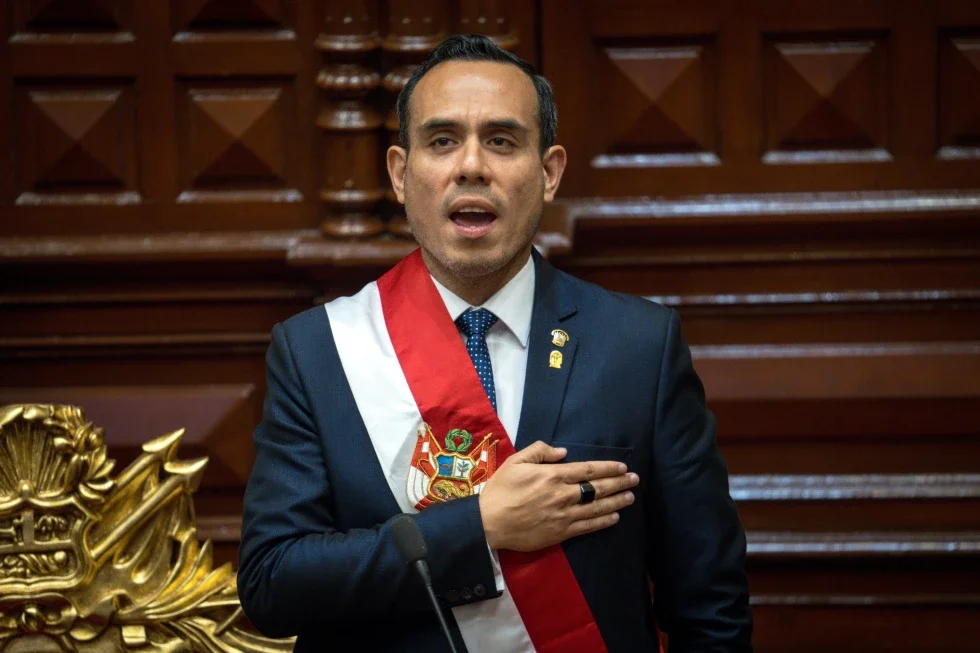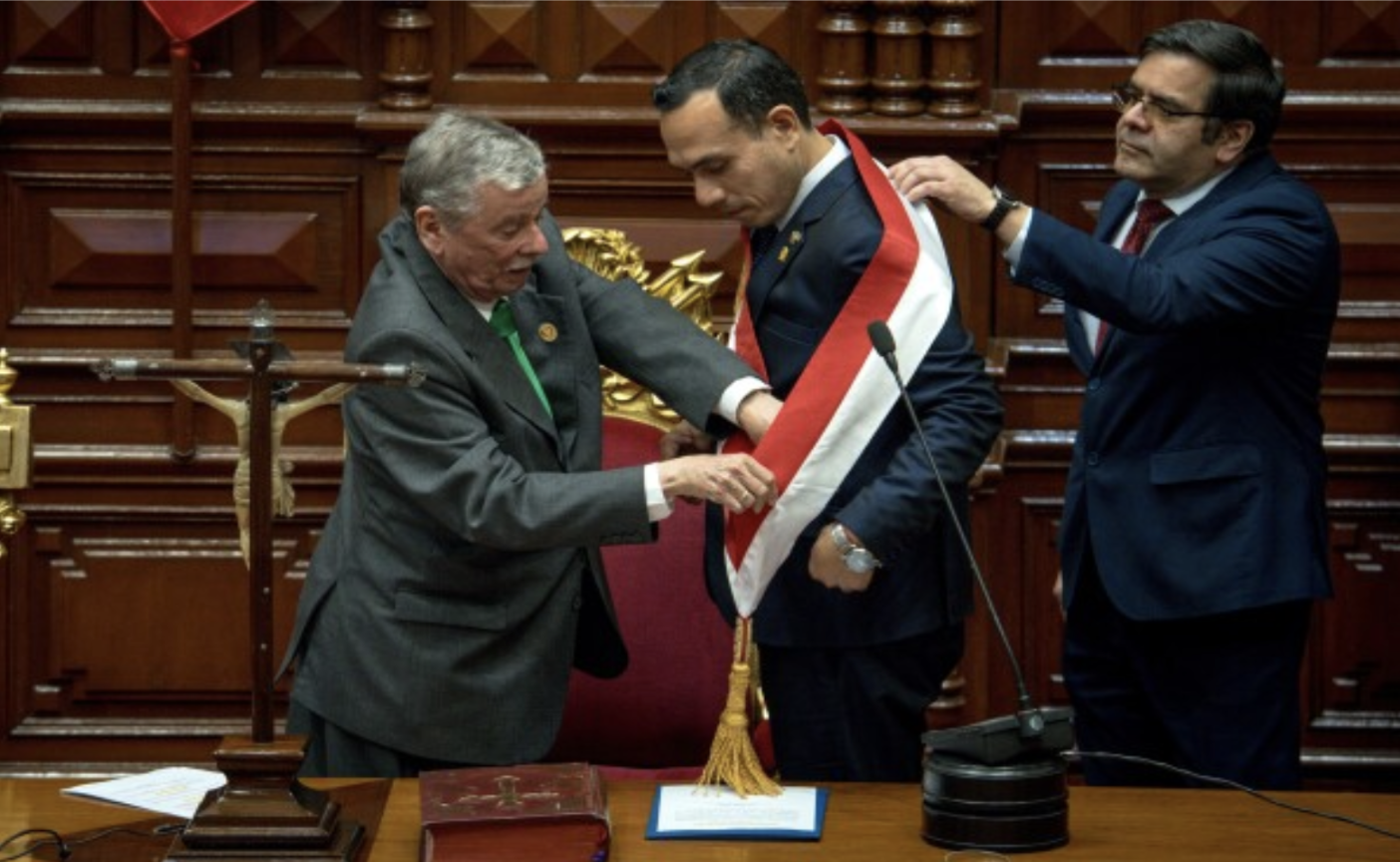Peru Has a New President
AP News/John Reyes
Peru has now seen eight different faces for their presidency in the past ten years. On Oct.10, Congress voted to remove President Dina Boluarte amid allegations of illicit enrichment and public outrage over rising violent crime that left her approval ratings in the single digits. These accusations intensified after investigators discovered undisclosed luxury Rolex watches, fueling suspicions of unexplained wealth. Peruvians simultaneously expressed deep frustrations over escalating extortion networks and a wave of high-profile murders and attacks that have made daily life feel increasingly unsafe. Legislators used the constitutional mechanism of “moral incapacity” to impeach her, a tool that has become an increasingly frequent route for removing presidents in Peru’s fractious political system. Following Boluarte’s removal, Jose Jeri, who was serving as president of Congress, was sworn in as Peru’s new president. The turnover marks yet another chapter in a decade of executive instability that has left the country cycling through leaders in quick succession.
Political scientists point to weak party institutionalization, extreme fragmentation in Congress, and a politicized judiciary as structural drivers of Peru’s revolving-door presidencies. When parties fail to organize stable legislative coalitions, presidents are vulnerable to impeachment and legislative maneuvering. The country’s pattern of short-lived administrations has become a structural feature rather than an exception.
Jerí’s early moves have focused on security and signals to markets. On Oct. 14, he appointed experienced technocrats to key cabinet posts, including a former constitutional court official as prime minister and a market-oriented economy minister. He also declared a 30-day state of emergency in Lima, a measure that allows the government to deploy the military alongside police and carry out intensified patrols and operations in an effort to address the surge in violent crime. Those steps are intended both to calm public anxiety and to reassure investors that the transitional government will act decisively.
AP News/Mauricio Munoz
Analysts caution that short term security measures will not address the deeper political instability that continues to erode government effectiveness and raise sovereign risk. Institutions like the IMF warn that persistent uncertainty limits public investments and increases borrowing costs.
The mining sector reflects these risks. In 2022, Peru dropped 18 places in the Fraser Institute's investor- attractiveness index. A decline experts tie to political turmoil and what former minister Gonzalo Tamayo called “mis-government”. With five presidents between 2020 and 2022, companies grew wary of shifting rules and held back on long-term investments.
Peru’s political instability has contributed to a climate of uncertainty that shapes economic decision-making. Economist Hugo Pera notes that when “the rules of the game” shift with each administration or congressional dispute, investors and businesses become cautious about long-term commitments. This uncertainty has coincided with a slowdown of Peru’s potential growth rate, from around 6.5 in 2013 to roughly about 3 percent today. Analysts say that frequent leadership changes complicate policy continuity, influencing investment decisions, and the country’s broader economic outlook.
The Bertelsmann Stiftung’s 2024 Transformation Index observes that “high levels of polarization and politicization have had a detrimental effect on Peru’s international reputation”, contending that “Peru is not considered a credible and reliable partner in its relations with the international community.” The assessment underscores how years of abrupt presidential changes have not only paralyzed domestic governance but also projected an image of unreliability abroad. Negotiations over trade, security, and investment face skepticism from foreign governments and companies wary of entering long-term agreements with a country whose leadership and policy direction can change overnight. Peru’s political volatility has also eroded its credibility on the international stage, weakening the confidence of both foreign investors and diplomatic partners.
Scholars who study democratic resilience in Latin America argue the remedy lies in strengthening party systems, insulating oversight institutions from partisan capture, and reforming impeachment and judicial-review mechanisms that are susceptible to exploitation for political ends.


